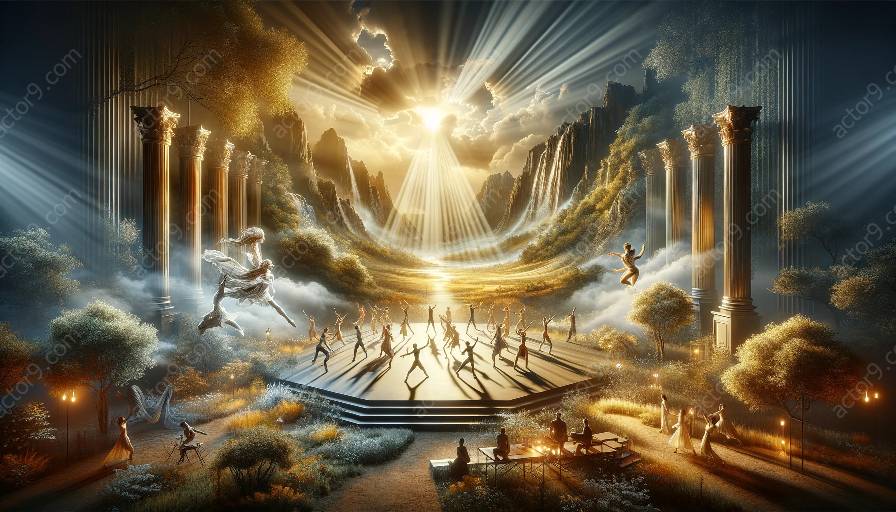Lighting plays a crucial role in physical theatre productions, transforming the stage and enhancing the audience's experience. When it comes to both indoor and outdoor performances, the manipulation of light contributes to the visual, emotional, and atmospheric elements of the show.
The Role of Lighting in Physical Theatre
In physical theatre, lighting serves as a powerful tool to accentuate movement, emotion, and expression. It can help create a heightened sense of drama, enable performers to communicate non-verbally, and guide the audience's attention to specific focal points. The interplay between light and shadow can also convey mood and symbolism, adding depth and complexity to the performance.
Leveraging Lighting in Indoor Productions
Indoor physical theatre productions provide a controlled environment for lighting designers to craft specific atmospheres and visual effects. The ability to manipulate intensity, color, and direction of light allows for the creation of dynamic and immersive experiences. Whether it's using subtle spotlights to draw focus or utilizing dramatic color schemes to evoke certain emotions, indoor lighting design greatly influences the audience's perception and engagement with the performance.
Challenges of Outdoor Lighting in Physical Theatre
Outdoor physical theatre presents unique challenges for lighting design due to natural light conditions, environmental factors, and the absence of traditional stage infrastructure. However, outdoor productions offer a captivating canvas for creative lighting concepts, taking advantage of natural elements and architectural features as part of the performance. In these settings, lighting not only illuminates the action but also interacts with the surrounding environment, emphasizing the connection between the performance and the outdoor space.
Enhancing Visual and Emotional Elements
Lighting designers in physical theatre carefully consider the interplay of light and movement, enhancing the visual and emotional impact of performances. Dynamic lighting sequences, coordinated with the performers' movements, can elevate the visceral nature of physical theatre, amplifying the energy and intensity of the production. Whether indoors or outdoors, the integration of lighting design elevates the storytelling, adding depth and texture to the narrative.
Conclusion
Lighting serves as an integral component of physical theatre, contributing to the visual aesthetics, emotional resonance, and immersive experience for both indoor and outdoor productions. Its ability to shape and amplify the expressive elements of physical theatre demonstrates the vital role it plays in bringing performances to life.




































